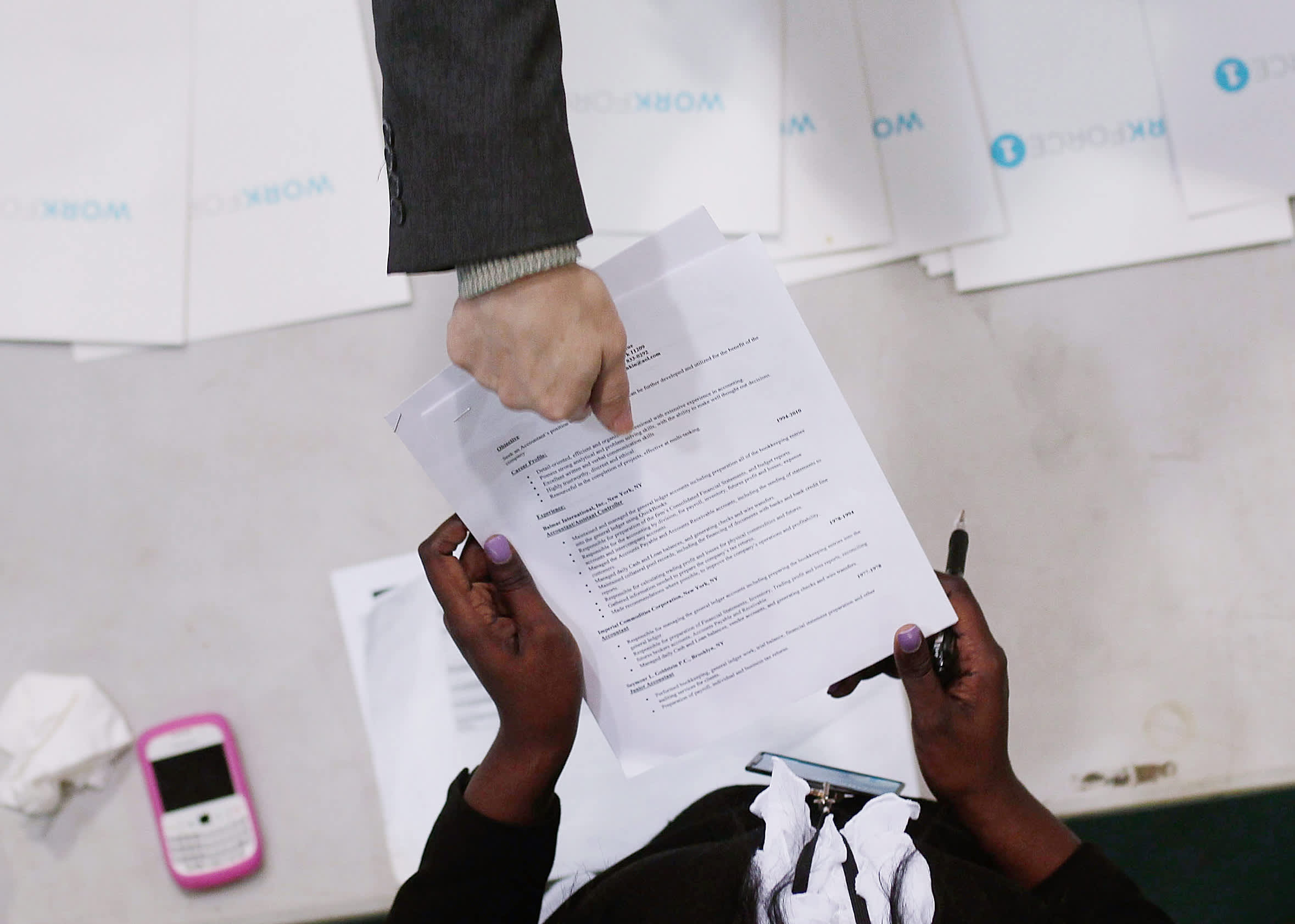A job-seeker (top) hands his resume to Candice Perkins, a representative of Workforce1 during a 'Work Search' event aimed at older unemployed people in New York City.
Getty Images
The first wave of bad economic news directly related to the coronavirus crisis is likely to come from the jobs market, and that could be delivered sooner rather than later.
Virtually all of the economic data releases out now cover periods before the COVID-19 spread began to zero in on the U.S. Some of those reports have hinted at a slowdown heading into the worst of the virus period, but the extent of the damage has been hard to gauge.
That will change over the next week or so when the Labor Department releases the tallies for weekly jobless claims,
Previous weeks have shown a labor market that was strong heading into the crisis — the week ended March 7 showed new filings of just 211,000, which reflected a 4,000 drop from the previous week. The four-week moving average edged up to 1.725 million, but that still remained within the confines of a well-functioning labor market.
This Thursday's number reflects the period through March 14, with economists surveyed by Dow Jones forecasting a reading of 220,000, or 9,000 above the previous week. But that reading will just begin to reflect some of the fallout.
Then comes the bad part.
Wall Street insiders in subsequent weeks are looking for numbers that could approach the all-time record of 695,000 set back in September 1982, a time when the U.S. was battling the runaway inflation that started in the late 1970s. The worst of the financial crisis just missed that mark, with a high of 655,000 in February 2009.
Individual states are reporting huge numbers. Connecticut has seen 30,000 claims filed just in the Friday-Tuesday period, according to a report in the Hartford Courant. Residents New York, Kentucky and Oregon have reported problems with websites used to register for claims, according to The Wall Street Journal.
Judging by traffic on Google Trends, the number could hit 800,000, George Pearkes, macro strategist at Bespoke Investment Group, said in a tweet.
"All the early readings that people are sending me on what's coming so far are obviously pretty alarming," said Peter Boockvar, chief investment officer at Bleakley Advisory Group. "I can't even put a number on it, how many hundreds of thousands of an increase. It's going to be traumatic."
How long it will take to peak is equally hard to gauge.
During the financial crisis, claims started to rise in July 2008 and hit their apex by the following March 2009. The peak top in claims came a month after Congress passed the American Recovery and Reinvestment Act, the stimulus package aimed at pulling the economy out of its worst slump since the Great Depression, noted Jessica Rabe, co-founder of DataTrek Research.
Congress currently is working on another package that could approach or exceed $1 trillion, with much of the spending directed at taking care of workers and small-business owners hit hard by the economic halt that has accompanied the virus's spread.
"That's why the right size and scope of a fiscal stimulus package is key to stabilizing both the US economy and equity markets during the current COVID-19 crisis," Rabe said in a note.
Correction: During the financial crisis, claims started to rise in July 2008 and hit their apex by the following March 2009. An earlier version misstated a year.


